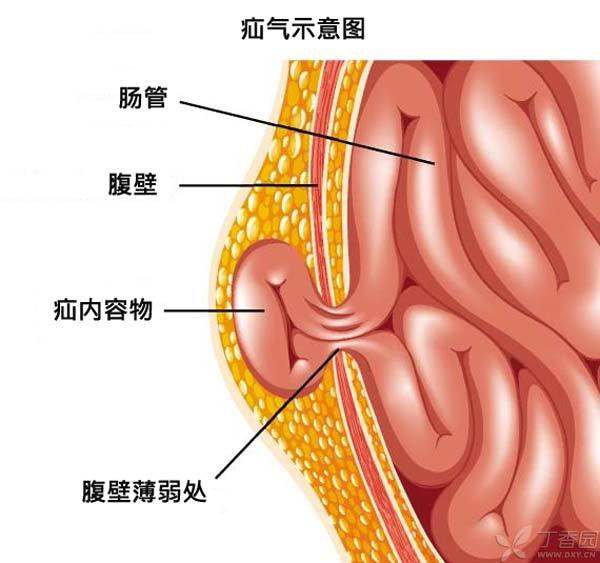
Organs and tissues in the body leave the place where they should have stayed and enter another place through the surrounding defects, pores or weaknesses, which is called hernia.
It can be imagined that a football has a broken skin and a bag bulging from the crevasse. This bag is called hernia.
How did the hernia come from?
Hernia is more common in the abdomen, and the common is abdominal external hernia, which is formed by the intestinal canal, fat, etc. in the stomach, together with the peritoneum, protruding out of the body surface through the weak points or pores of the abdominal wall.
Touch your belly and feel that the skin and flesh are evenly distributed. But in fact, in the belly, the muscles and fascia on the abdominal wall are not uniform, but thin and thick, and in some places there are some naturally formed pores.
When the strength of the abdominal wall decreases due to muscle degeneration and other reasons, or the intra-abdominal pressure increases due to hard cough, constipation, carrying heavy objects and other actions, organs and tissues may be pushed to nearby weak places.
These organs and tissues bulge through the weak abdominal wall to form a sac, which is hernia.

Is there something from what in the bulge?
The bulge of hernia is different from the bulge of head hitting the doorframe.
This bulge is an organ in the stomach and will not fade away automatically. If you don’t pay attention to it, there may be more and more prominent parts.
The most afraid thing is that the organs in the bulge are stuck and cannot advance or retreat. At this time, the patient will feel pain and discomfort, and serious cases will cause ischemia and necrosis of the stuck organs and tissues.
Types of external abdominal hernia
Common inguinal hernia, femoral hernia, umbilical hernia, etc.
1. Inguinal hernia
Inguin is the two triangular areas at the junction of the small belly and the thigh root. The hernia occurring in this area is called inguinal hernia.
Inguinal hernia is divided into indirect hernia and direct hernia. Inguinal hernia is the most common. Due to physiological structure, the right side is more than the left side, and the male side is more than the female side.
